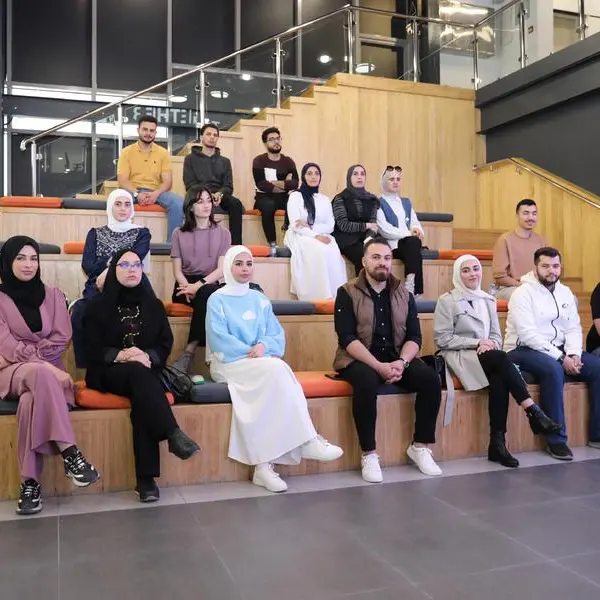Fitch Ratings-Dubai/London-17 March 2015
Fitch Ratings has affirmed Ooredoo Q.S.C's (Ooredoo) Long-term foreign currency Issuer Default Rating (IDR) at 'A+' with a Stable Outlook. Fitch has also affirmed Ooredoo's outstanding bonds and Sukuk issues, including Ooredoo International Finance Limited's global medium-term note programme and Ooredoo Tamweel Limited's Sukuk programme, at 'A+'.
The affirmation reflects the continued strength of Ooredoo's links with the State of Qatar (AA/Stable). Ooredoo's ratings are two notches lower than the Qatar's, based on the strong operational, strategic links, and moderately strong legal links (in the absence of an explicit sovereign guarantee), in accordance with Fitch's Parent and Subsidiary Rating Linkage methodology. Qatar directly and indirectly owns 69% of Ooredoo. Ooredoo is currently one of the highest-rated entities in the broader Fitch-rated global telecommunication peer group.
KEY RATING DRIVERS
State Support
Fitch continues to apply its parent and subsidiary rating linkage methodology in rating Ooredoo. Ooredoo's rating reflects Fitch's assessment of Ooredoo's strong links with Qatar, as it has strong operational and strategic ties with Qatar. Legal ties are underpinned by the presence of a change of control covenant in Ooredoo's financing documentation should Qatar cease to control the group. This implied state support underpins the strong rating category and offsets risks associated with diversification into weaker rated emerging markets, slowing sector growth and M&A risk.
Emerging Markets Macroeconomic Exposure
Ooredoo's revenue fell by 2% in the year to December 2014 as the company came under pressure from both FX fluctuations and exposure to a worsening political landscape in key markets. Notably the Indonesia rupiah average yearly exchange rate depreciated by 13% year on year against the US dollar in 2014, coupled with the on-going political situation in Iraq caused a significant revenue decline in those markets after years of growth.
Roll-out of 3G in early 2015 in Iraq may give further positive effects from increased data revenue and customer growth over the medium term. However, some parts of the network in north-west Iraq have been shut down due to the political situation, which is expected to supress revenue in the short term. Ooredoo's operations in such countries have the potential for higher headline growth than domestic markets, but exposure to these risks may prove challenging over the coming years.
Limited Growth Prospects
Ooredoo generates approximately 25% of its consolidated EBITDA from Qatar (excluding eliminations) and we expect the contribution from the domestic business to remain significant in the coming few years. Other GCC countries, mainly Oman and Kuwait account for around 10% of the group's consolidated EBITDA. These markets are highly penetrated with limited growth prospects and potential for adverse regulatory or competitive pressures. The company has responded by shifting its strategy towards efficiency improvements and focusing on data services, which should lead to a stabilisation in operating margins in the medium term. Nevertheless, Fitch expects pressure in this area to continue over the short to medium term with low to mid-single digit revenue growth and EBITDA margins under pressure at around 38-39% on a group basis.
Conservative Leverage Profile Likely
Ooredoo's consolidated leverage guidance is 1.5-2.5x net debt/EBITDA. The group's leverage remained within this level at December 2014 and Fitch expects that Ooredoo will continue to operate within these levels in the foreseeable future. Nevertheless, Fitch recognises that this ratio can fluctuate quite significantly within these limits depending upon any large scale M&A. However, we believe that if the group breached these levels and struggled to deleverage within 18-24 months, equity support from Qatar would be forthcoming to reduce debt and place leverage on a more stable footing.
M&A Risk and Increasing Capex
Fitch estimates that the awarded Myanmar license new investment will require around a further USD0.9bn of investments and capex over 2015-2017. As this is a greenfield network roll-out, we do not expect any material positive contribution to the group's cash flow generation until 2017. Group capex including spectrum costs is thus expected to remain high over 2015-16 before returning towards historical levels.
KEY ASSUMPTIONS
Fitch's key assumptions within our rating case for the issuer include:
- We assume no change in the implied support and commitment from, and ownership by Qatar.
- Revenues to fall approximately 3% in 2015 driven by FX volatility before returning to growth in FY16/17, assuming no further significant moves in exchange rates.
- Earnings volatility in Iraq and Indonesia to reduce after a turbulent 2014.
- Stable EBITDA margin in 2015 and 2016 at around 39% (39% in 2014) but lower than the 43% achieved in 2013.
- Capex and license fees to increase to 34% of revenue in 2015 before returning to historical levels of around the mid-20%. We expect capex will largely be financed through internally generated funds.
- Funds from operations (FFO)-adjusted net leverage to rise, approaching 3.5x at end of 2015, before falling towards 3.0x in FY17.
- FCF to remain negative in the short to medium term before returning to positive in 2017, boosted by lower capex and contributions to EBITDA from Myanmar.
Positive: Future developments that could lead to positive rating action include:
- Explicit guarantees from Qatar in favour of Ooredoo could likely result in positive rating action on Ooredoo's IDR, providing that the remaining elements of the parent-subsidiary linkage do not weaken.
- Positive rating action on Qatar could lead to positive rating action on Ooredoo.
Negative: Future developments that could lead to negative rating action include:
- A downgrade of the sovereign rating or any change in the implied support, commitment, importance to and ownership by Qatar would prompt a review of the ratings
- Aggressive acquisitions that breach the company's maximum net debt/EBITDA of 2.5x without deleveraging below that level within 18-24 months would be negative for the ratings.
SOVEREIGN RATING SENSITIVITIES
The Stable Outlook reflects Fitch's assessment that upside and downside risks to the rating are currently well balanced.
The main factors that individually or collectively might lead to positive rating action are:
- Improvement in structural weaknesses such as reduction in oil dependence, and a strengthening in governance, the business environment and the economic policy framework.
The main factors that, individually or collectively, could lead to negative rating action are:
- Sustained low oil prices that erode fiscal and external buffers.
- An overheating economy that stretches bank balance sheets and necessitates government support.
- Spill over from a regional geopolitical shock or a renewed deterioration in regional political relations, that impacts economic, social or political stability.
-Ends-
Contacts:
Principal Analyst
James Hollamby
Analyst
+44 20 3530 1656
Supervisory Analyst
Bashar Al Natoor
Director
+971 44241242
Al Thuraya Tower 1
Office 1805
Dubai Media City
Committee Chair
Damien Chew, CFA
Senior Director
+44 20 3530 1424
Media Relations: Elaine Bailey, London, Tel: +44 203 530 1153, Email: elaine.bailey@fitchratings.com.
Additional information is available at www.fitchratings.com. For regulatory purposes in various jurisdictions, the supervisory analyst named above is deemed to be the primary analyst for this issuer; the principal analyst is deemed to be the secondary.
Applicable criteria, Rating Sukuk dated 9 August 2013, and Corporate Rating Methodology: Including Short-Term Ratings and Parent and Subsidiary Linkage dated 28 May 2014, are available on www.fitchratings.com.
© Press Release 2015










